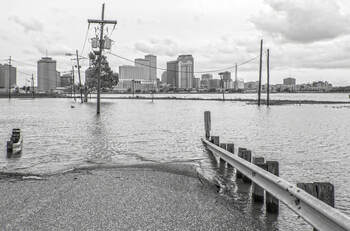NTH Consultants, Ltd.
| As our partner Spackman, Mossop, Michaels experienced and lived through at their office location in New Orleans, Louisiana during the devastation of Hurricane Katrina in 2005, the disaster is not so much the weather-related event(s) of the hurricane and subsequent flooding, but in the failures of the community to be adequately prepared and engineered to handle a potential climate event. As Elizabeth Mossop detailed in her recent article, building resilient communities is not just about armoring, leveeing, and walling, but re-thinking our previous mindset for handling stormwater and floodwaters, taking advantage of more natural processes for management and conveyance. |
| Similarly, as experienced in Texas, energy reliability is at the top of the list in making a more fortified community. System redundancy is key to ensuring that the inevitable disruption of service is minimized after a natural disaster, reducing long-term concerns and getting an area back on its feet quickly. Microgrids, which de-centralize power production and distribution to allow an area to isolate from the grid and be self-sufficient is one strategy for electrical system redundancy. Instead of large power generation stations and distribution networks, microgrids move to a more localized energy production system, minimizing large-scale disruptions in the event of significant power outages. For instance, Tesla, with their advancements in solar generation and Powerwall battery storage systems, are part of a microgrid solution. |
Politics aside, whether you believe in the science of climate change or not, one fact remains relevant based on the recent trends of significantly disastrous weather-related events: We must actively pursue more thoughtful approaches to engineering and designing our communities and infrastructure to be better prepared to handle the now “usual” extreme events, integrating natural and built features to achieve more resilient and sustainable communities.




 RSS Feed
RSS Feed